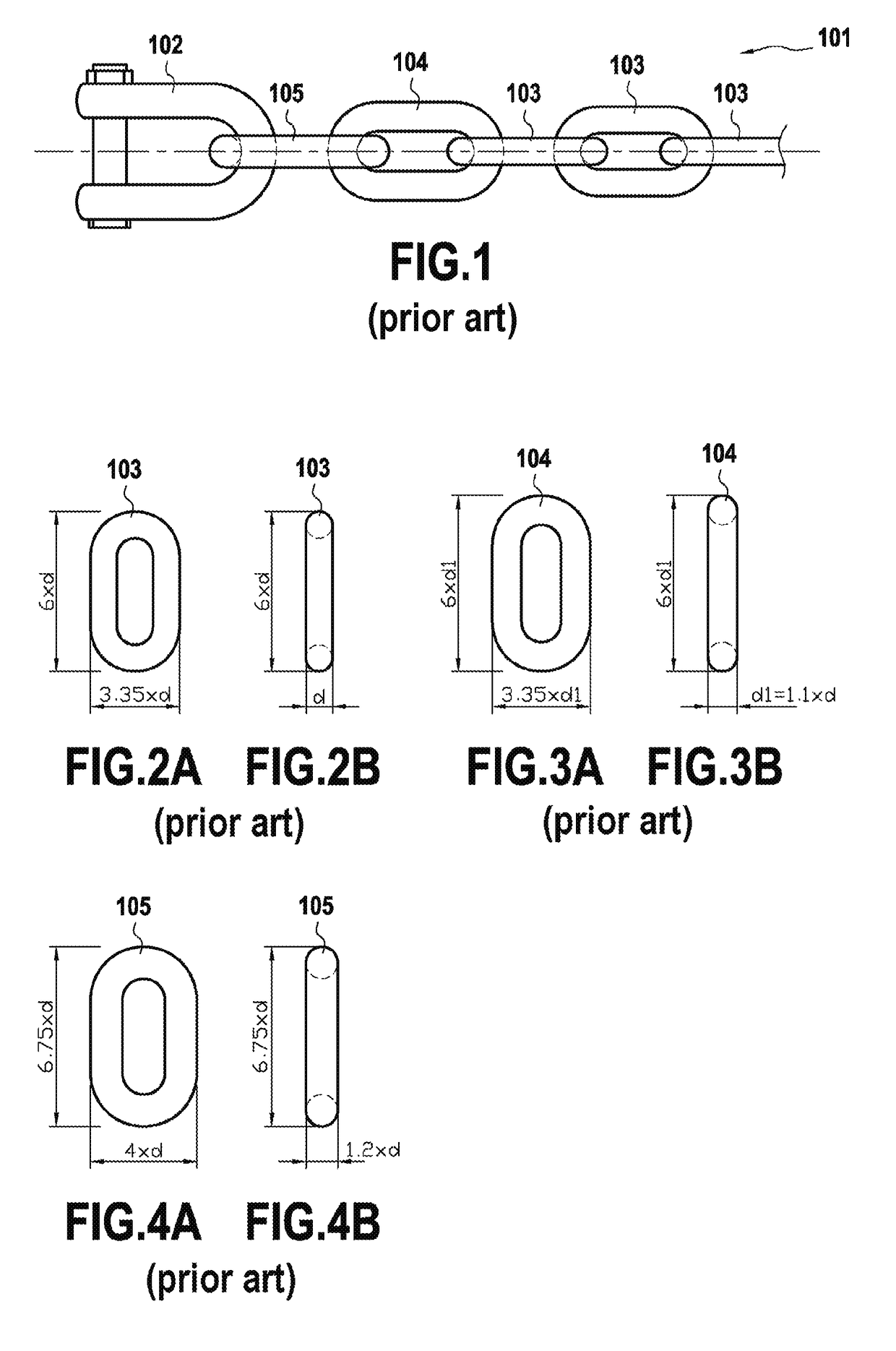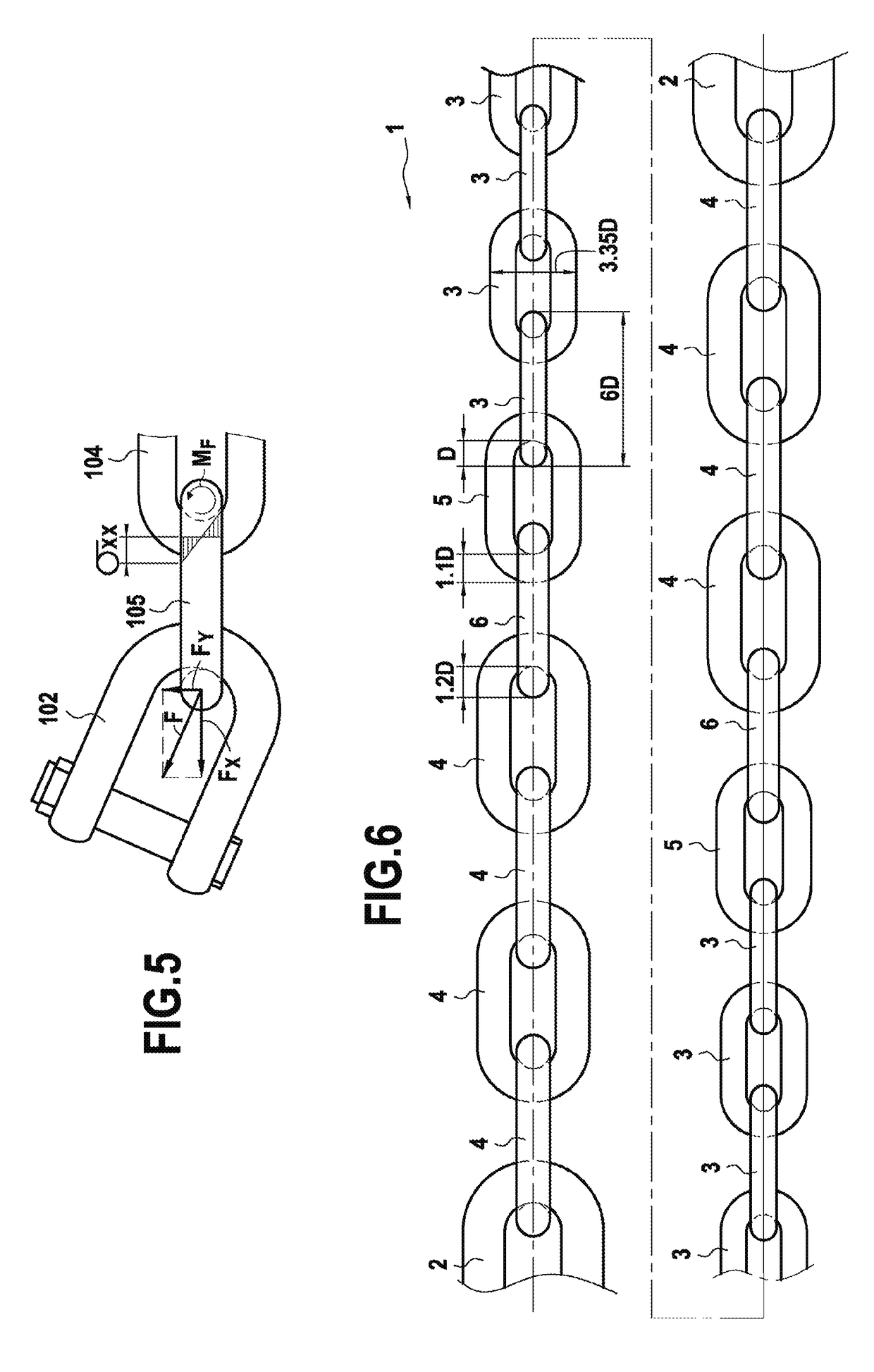Anchor chain
a technology of anchor chain and chain, which is applied in the direction of hoisting chain, shackle, and chain, can solve the problems of deformation of the contact area between the links, bending the elastic limit of the material of the links, and creating flats at the interfaces between adjacent links, so as to avoid bending fatigue in the links
- Summary
- Abstract
- Description
- Claims
- Application Information
AI Technical Summary
Benefits of technology
Problems solved by technology
Method used
Image
Examples
Embodiment Construction
[0032]FIG. 1 shows a prior art anchor chain 101 in compliance with the API Spec 2F standard of the American Petroleum Institute. This anchor chain 101, which is connected at one end to an anchor shackle 102, comprises a plurality of successive common links 103, and between these common links 103 and the shackle 102, a standard enlarged link 104, and an end link 105.
[0033]As shown in FIGS. 2A and 2B, each common link 103 presents a bar diameter d, a width equal to 3.35 times d, and a length equal to six times d. The standard enlarged link 104, which in the chain 101 is adjacent to said plurality of successive common links 103, and which is shown in detail in FIGS. 3A and 3B, presents a bar diameter d1 equal to 1.1 times the bar diameter d of the common links 103, a width equal to 3.35 times d1, and a length equal to six times d1. Finally, the end link 105, which is interposed between the standard enlarged link 104 and the anchor shackle 102, resents a bar diameter equal to 1.2 times ...
PUM
 Login to View More
Login to View More Abstract
Description
Claims
Application Information
 Login to View More
Login to View More - R&D
- Intellectual Property
- Life Sciences
- Materials
- Tech Scout
- Unparalleled Data Quality
- Higher Quality Content
- 60% Fewer Hallucinations
Browse by: Latest US Patents, China's latest patents, Technical Efficacy Thesaurus, Application Domain, Technology Topic, Popular Technical Reports.
© 2025 PatSnap. All rights reserved.Legal|Privacy policy|Modern Slavery Act Transparency Statement|Sitemap|About US| Contact US: help@patsnap.com



